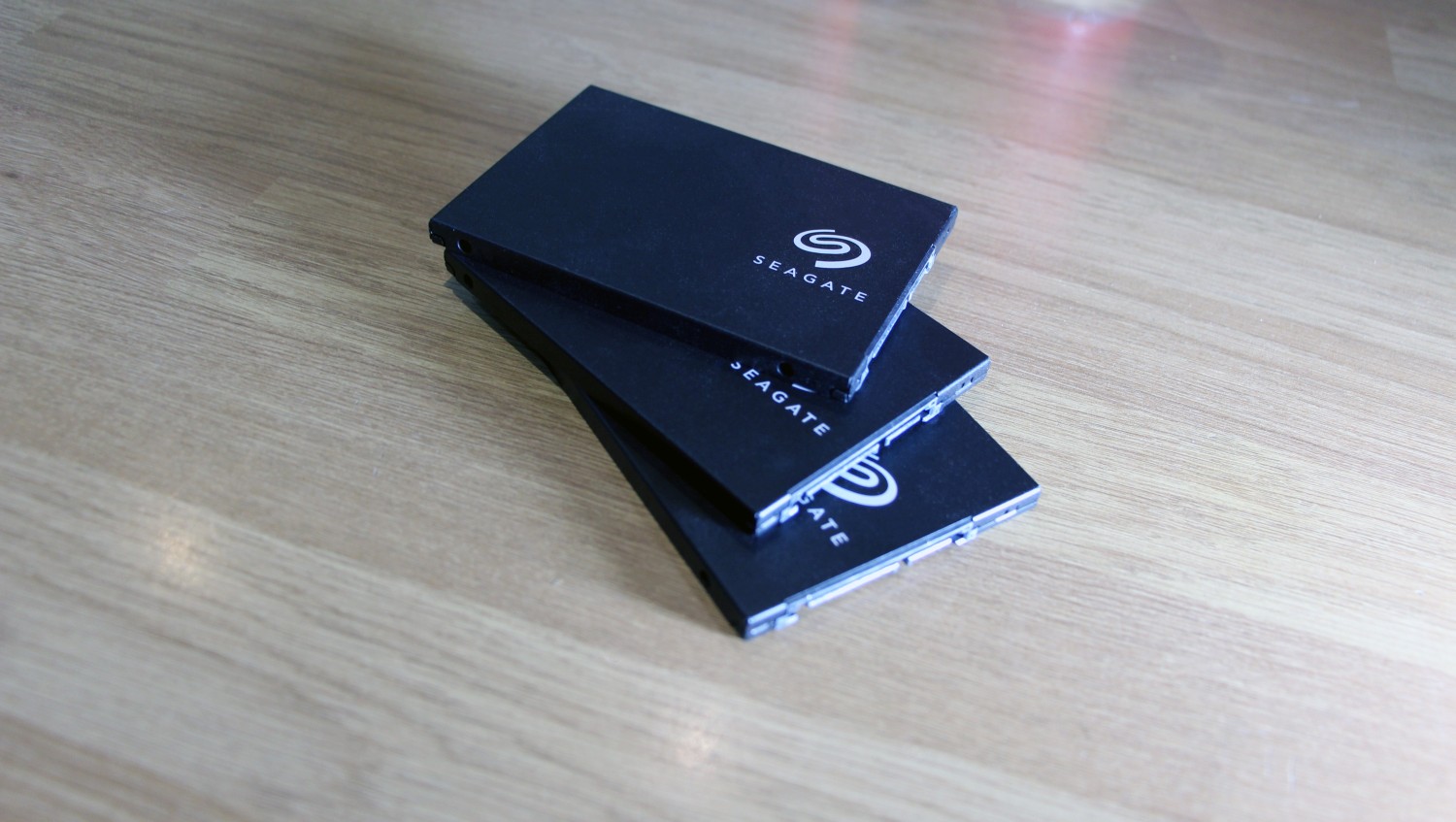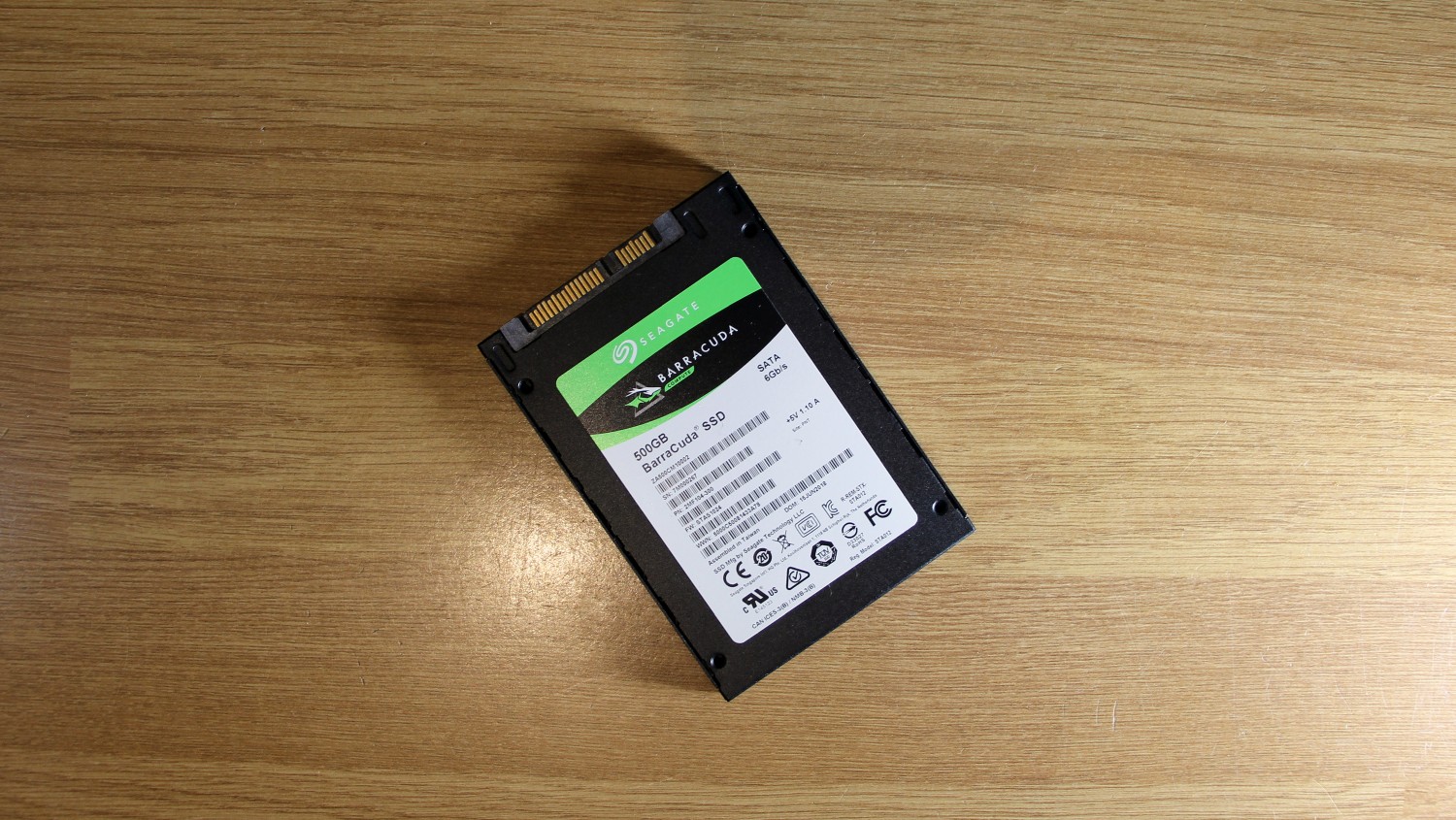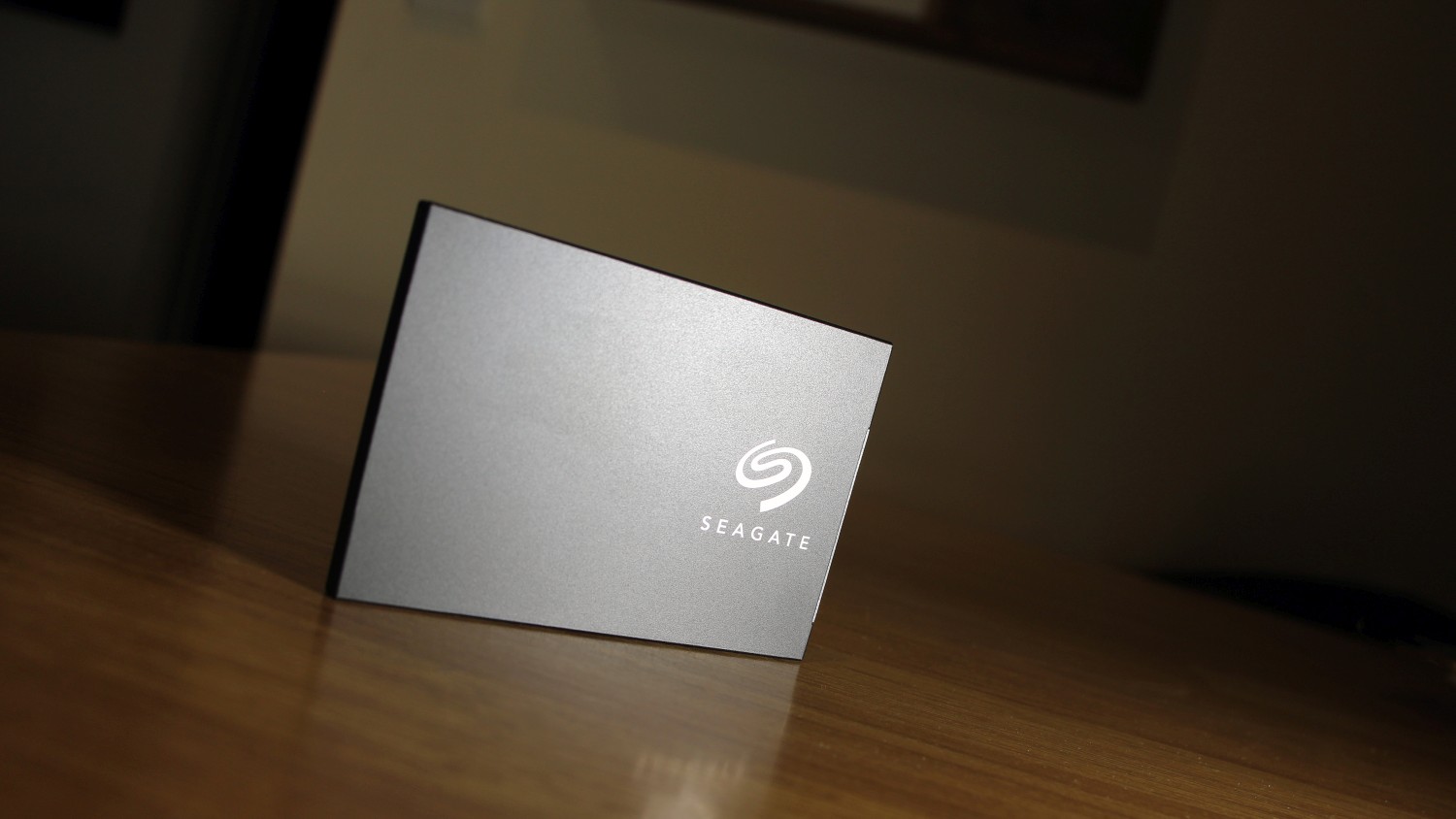Seagate Barracuda 500GB SSD review: A fish out of water
Can this dominant hard disk brand transfer its success to SSDs?
Reasonable SATA speeds, but it struggles with trickier workloads and could be a little cheaper
-
+
Affordable pricing; Reasonable sequential performance; Conventional specification
-
-
lower with complex workloads; No cheaper than quicker rivals

The Seagate Barracuda name will be familiar to people who keep an eye on storage, but we're used to seeing the brand attached to slow, capacious hard disks.
Now, though, the familiar name and logo has appeared on a new range of SSDs. That's no surprise, with improving SSD capacities and decreasing prices causing ructions in the hard disk market. But are these new drives any good?
Seagate Barracuda 500GB SSD review: Design
There are no surprises when it comes to the Barracuda's specification. These drives are powered by a quad-core Phison S10 controller that's been around since 2014. The memory is made by Toshiba, and is 64-layer 3D TLC NAND. That type of memory is the most common configuration in SATA-based SSDs these days, and that's about as many layers as you're going to get right now. It's a system that tries to balance efficiency, reliability and performance rather than going all-out for speed.
That makes sense in a drive like the Barracuda, which needs reliability rather than speed. And breaking records is a moot point, anyway, because it uses the SATA 3 interface - so read and write speeds are capped at around 600MB/sec. That's far faster than any hard disk, but several times slower than pricier PCI-based NVMe drives. The rest of the specification isn't particularly ambitious either. You get DDR3 memory rather than faster DDR4, for instance. There's TRIM and S.M.A.R.T support, but no low-density error correction and no AES 256-bit encryption.

Seagate produces the Barracuda SSD in four capacities: 250GB, 500GB, 1TB and 2TB. We've tested the 500GB model, which costs 58 exc VAT. The 250GB drive costs just 33, with the 1TB and 2TB models arriving at 113 and 250 respectively.
Those four capacities have different endurance ratings based around how much file writing each SSD can withstand. The 250GB and 500GB drives are rated for 120TB and 249TB of file writes. The 1TB and 2TB models serve up 485TB and 1,067TB of file writing potential. For the vast majority of users those endurance levels will be fine - you'll never get near them unless you're writing hundreds of gigabytes to the drive every single day for five years.
There's nothing inherently wrong with the Barracuda's familiar specification and modest pricing, but Seagate's drives face strong competition. The Samsung 860 EVO has the same sort of NAND as the Seagate, but it has AES 256-bit encryption - and is available with a 4TB model. Samsung's prices trade blows with Seagate. The 250GB Samsung is 40 exc VAT, but the 500GB model is 58 - just like the Seagate. For the 1TB and 2TB drives, expect to pay 123 and 266.
The Crucial MX500 is available in the same capacities as the Seagate. It's got encryption, but it has poorer endurance ratings than the Barracudas. It's a little more expensive than the Seagate, with its four capacities costing 58, 63, 132 and 275 respectively.
On the outside, the Barracuda uses the conventional 7mm form factor, so it'll fit into any laptop or dekstop with a 2.5in drive bay. It's also got a five-year warranty, which matches both its rivals.
Seagate Barracuda 500GB SSD review: Performance
There are no surprises when it comes to the Barracuda's benchmarks. Its CrystalDiskMark sequential read and write speeds of 563MB/sec and 536MB/sec are fine - quicker than a hard disk, but virtually identical to the Samsung 860 EVO. The Seagate's read score is level with the Crucial, and its write score is better - but only just.

A dive into further CrystalDiskMark testing highlights the Barracuda's strengths and weaknesses. Its 4KiB Q8T8 write speed of 368MB/sec is marginally better than the Samsung, but its read speed of 382MB/sec is nearly 30MB/s slower. It outpaced the 860 EVO when handling files in single threads, but fell behind in multi-threaded and more complex workloads. It was, at least, better than the Crucial in most of these tests.
A run of the ATTO disk benchmark confirmed those results. The Seagate's peak read and write speeds of 566MB/sec and 536MB/sec are good - but the drive only hit read and write speeds of 58MB/sec and 27MB/sec when working with that application's smallest workloads. The Barracuda only hit its steady top speeds after about one third of the Atto test had been run.
When a big portion of an SSD's workload is handling multi-threaded situations and small files, that's an issue - and it means that the Seagate won't be as responsive as the Samsung drive.
Seagate Barracuda 500GB SSD review: Verdict
The Seagate Barrucada SSD is one of many drives that offer far better performance than hard disks - without costing much more at the checkout.

And, while the Barracuda does deliver that extra speed, it's an unambitious product that doesn't earn a wholehearted recommendation. While it matches the Samsung drive in sequential read and write tests, the aging controller and standard NAND configuration can't cope with trickier tasks. Its lesser speeds in more complex workloads indicate that the Barracuda won't be as responsive when it comes to getting work done.
The Barracuda is not slow, though, and would be worth buying if it were a little cheaper, but the Samsung 860 EVO offers more consistent performance for the same sort of price - so that's the SSD we'd buy instead.
Verdict
Reasonable SATA speeds, but it struggles with trickier workloads and could be a little cheaper
Capacity: 500GB (250GB, 1TB, 2TB available)
Controller: Phison S10
Interface: SATA 3
Warranty: 5yr RTB
Get the ITPro daily newsletter
Sign up today and you will receive a free copy of our Future Focus 2025 report - the leading guidance on AI, cybersecurity and other IT challenges as per 700+ senior executives
Mike Jennings has worked as a technology journalist for more than a decade and has been fascinated by computers since childhood, when he spent far too long building terrible websites. He loves desktop PCs, components, laptops and anything to do with the latest hardware.
Mike worked as a staff writer at PC Pro magazine in London for seven years, and during that time wrote for a variety of other tech titles, including Custom PC, Micro Mart and Computer Shopper. Since 2013, he’s been a freelance tech writer, and writes regularly for titles like Wired, TechRadar, Stuff, TechSpot, IT Pro, TrustedReviews and TechAdvisor. He still loves tech and covers everything from the latest business hardware and software to high-end gaming gear, and you’ll find him on plenty of sites writing reviews, features and guides on a vast range of topics.
You can email Mike at mike@mike-jennings.net, or find him on Twitter at @mikejjennings
-
 ‘Phishing kits are a force multiplier': Cheap cyber crime kits can be bought on the dark web for less than $25 – and experts warn it’s lowering the barrier of entry for amateur hackers
‘Phishing kits are a force multiplier': Cheap cyber crime kits can be bought on the dark web for less than $25 – and experts warn it’s lowering the barrier of entry for amateur hackersNews Research from NordVPN shows phishing kits are now widely available on the dark web and via messaging apps like Telegram, and are often selling for less than $25.
By Emma Woollacott Published
-
 Redis unveils new tools for developers working on AI applications
Redis unveils new tools for developers working on AI applicationsNews Redis has announced new tools aimed at making it easier for AI developers to build applications and optimize large language model (LLM) outputs.
By Ross Kelly Published
-
 Google layoffs continue with "hundreds" cut from Chrome, Android, and Pixel teams
Google layoffs continue with "hundreds" cut from Chrome, Android, and Pixel teamsNews The tech giant's efficiency drive enters a third year with devices teams the latest target
By Bobby Hellard Published